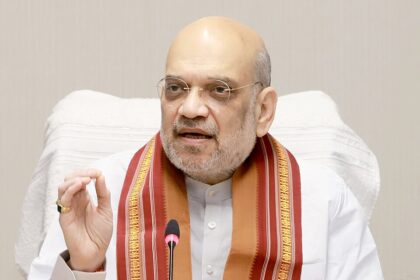Thackeray Reunion in Mumbai: Uddhav & Raj Thackeray to Lead Joint Protest Over ‘Hindi Imposition’
Mumbai, June 27, 2025 – In a dramatic and historic move, estranged cousins Uddhav Thackeray (Shiv Sena UBT) and Raj Thackeray (Maharashtra Navnirman Sena) have come together to jointly lead a protest march on July 5 in Mumbai, opposing what they term as the “imposition” of Hindi in Maharashtra schools. The decision marks a rare and significant reconciliation between the two since their political split nearly two decades ago .
Background to the Protest
The flashpoint is the recent announcement by Chief Minister Devendra Fadnavis’s BJP-led state government to introduce Hindi as an optional third language for students from Classes 1 to 5, under the National Education Policy’s three-language formula. Critics argue the move threatens Maharashtra’s cultural identity and imposes a “language emergency” on Marathi-speaking students.
Uddhav and Raj’s Statements
Both leaders addressed separate press conferences before deciding to unite. Uddhav strongly criticized the decision, calling it a “language emergency” and claiming it undermines Marathi traditions. Raj echoed this sentiment and accused the government of fencing in linguistic freedom.
In a post on X (formerly Twitter), Shiv Sena (UBT) spokesperson Sanjay Raut confirmed the joint protest:
“A joint protest of MNS and Sena (UBT) will take place on July 5,” adding that both parties are committed to preserving Marathi identity and cultural pride.
Protest Plan Details
Date & Route: The march will begin at Girgaon Chowpatty and proceed to Azad Maidan in South Mumbai, symbolically asserting their stance before key government offices.
Format: Raj Thackeray has emphasized that the rally will be apolitical—no party flags will be allowed, focusing solely on Marathi cultural pride.
Participation: The event is expected to draw students, language advocates, parents, and teachers. Raj has personally invited multiple political groups, along with cultural and educational organizations, to join.
Political Significance
The joint protest has reverberated across Maharashtra politics. This marks the first time in over 20 years that both Thackerays have stood together publicly. Political observers suggest that this unity may signal a broader realignment in regional political rivalries, re-focusing on defending Marathi interests and identities.
Official Government Response
When questioned on June 24, Chief Minister Fadnavis said the language policy would undergo wide-ranging consultations with experts, literary figures, and political leaders before final adoption. He emphasized that Marathi remains the only compulsory language, while Hindi would be introduced as a link language—with alternatives available for students if enough interest exists.
Education Minister Dada Bhuse met with Raj Thackeray prior to their announcement, attempting to clarify the policy. However, Raj rejected these explanations and insisted no compromise would be accepted on protecting Marathi culture.
Cultural Resonance
The issue strongly resonates with Marathi pride, echoing earlier anti-Hindi sentiments in states like Tamil Nadu. Raj Thackeray warned on X:
“We are Hindus but not Hindi! If you try to paint Maharashtra as Hindi, then there is bound to be a struggle in Maharashtra…”
Aaditya Thackeray (Shiv Sena UBT) also criticized the state’s alleged sidelining of Marathi culture, accusing the government of canceling a “Marathi Rangbhoomi Dalan” cultural project.
🇮🇳 Context & Reactions
The cross-party pushback highlights a growing sentiment in Maharashtra and other non-Hindi-speaking regions that Hindi is being elevated at the expense of local languages and cultures. This territorial language issue has previously fueled political mobilizations in the South and West of India.
“Our language is our identity,” said a Marathi teacher in Pune. “This isn’t just about learning Hindi—it’s about preserving our culture, our history.”
What to Watch
- uly 5 March: Will draw crowds from across society—from parents to political leaders.
- Government engagement: The final policy may be shaped by consultations promised by Fadnavis and Bhuse—possibly incorporating views from writers, academics, and linguistic communities.
- Thackeray alliance: The public unity might pave the way for more coordinated actions or even an evolving political partnership.
With this unexpected reunion, Maharashtra’s political discourse has taken a sharp turn—balancing education policy, cultural identity, and regional pride. July 5 could well be the turning point in how Maharashtra defines its linguistic future.








